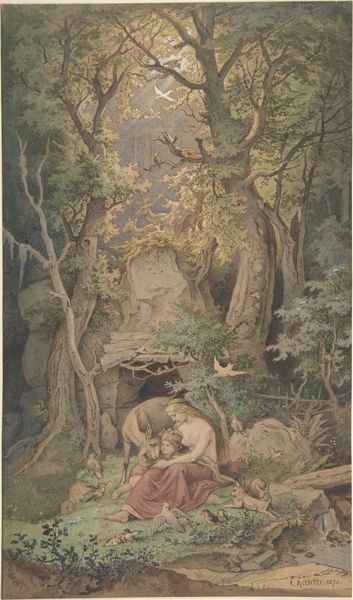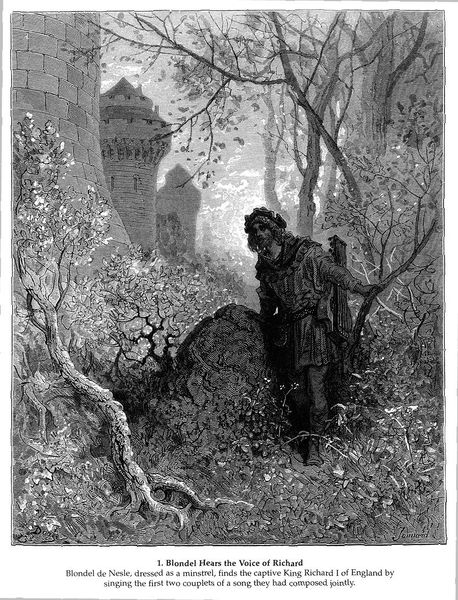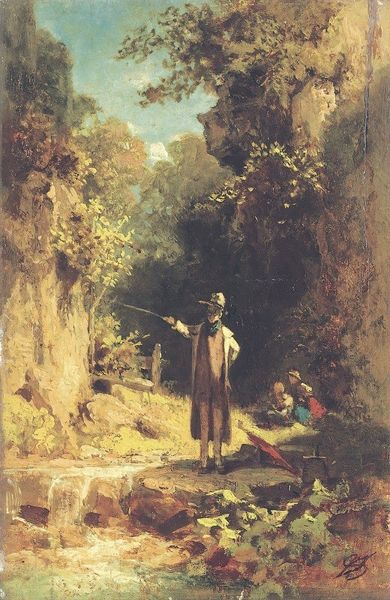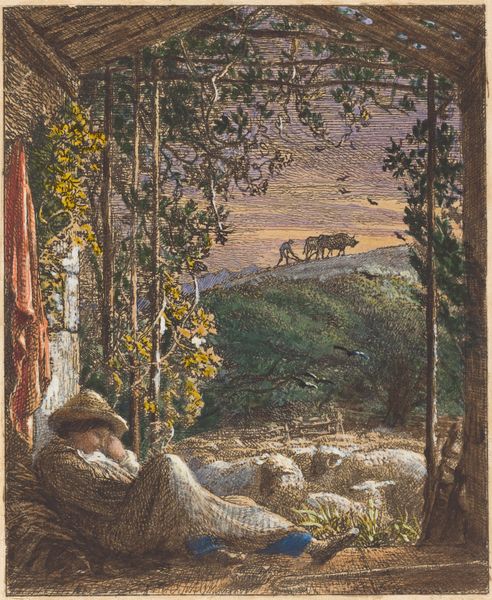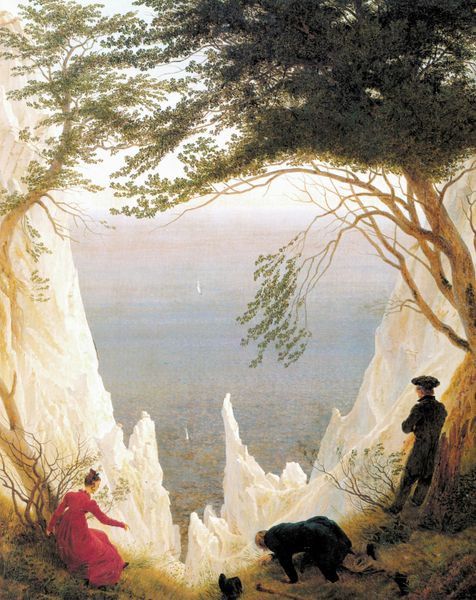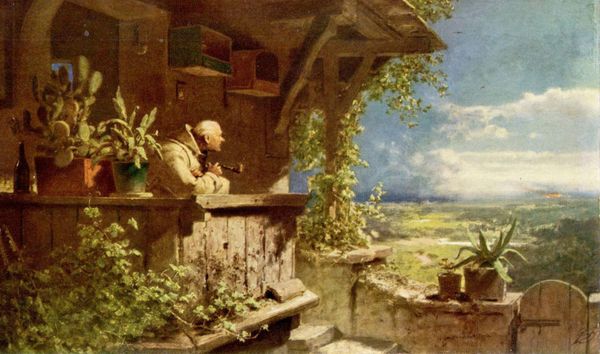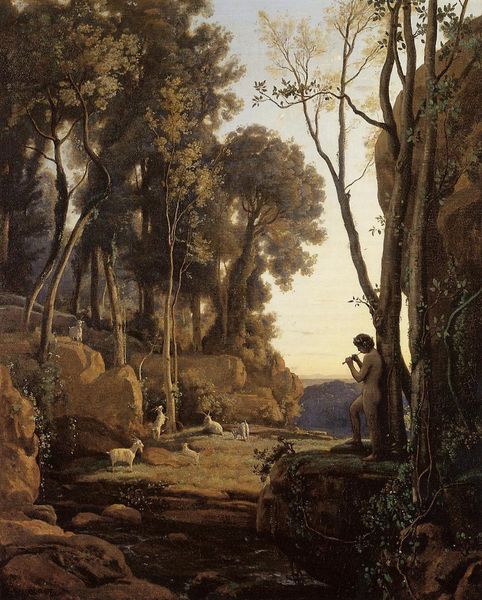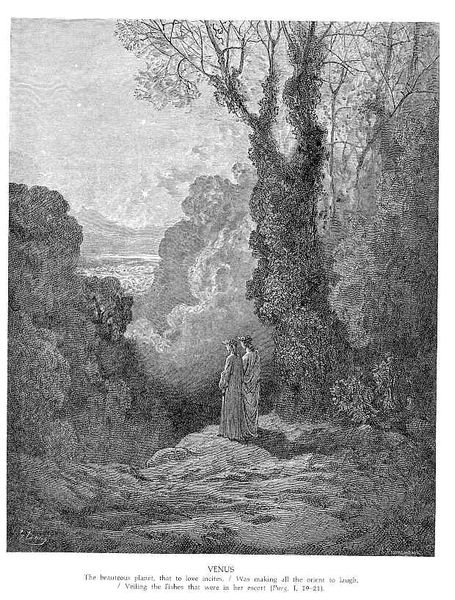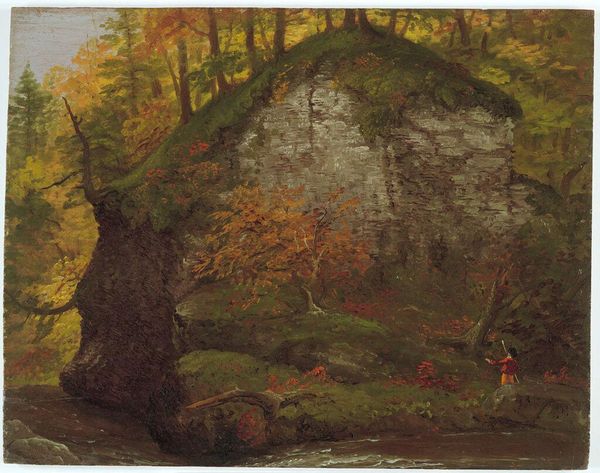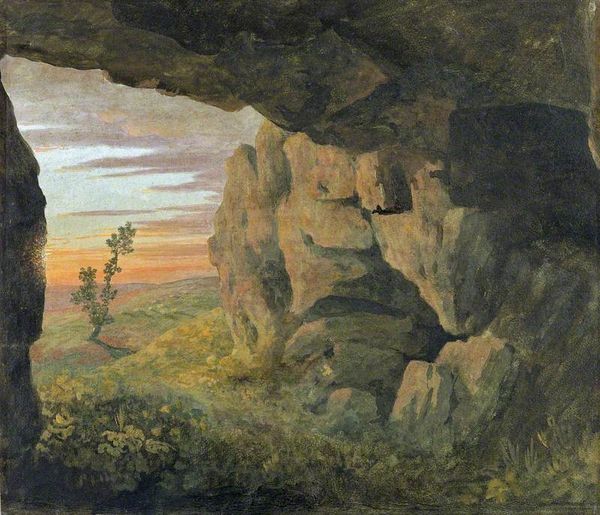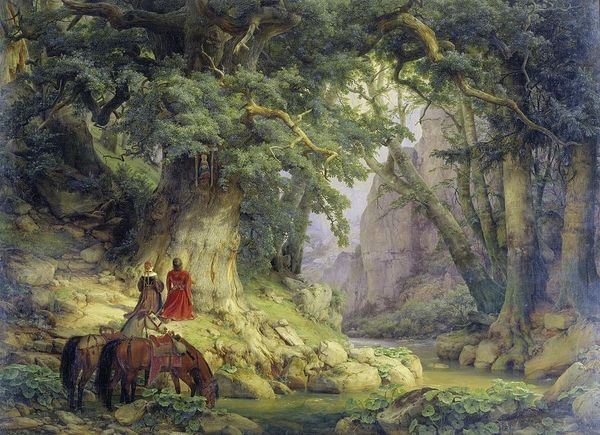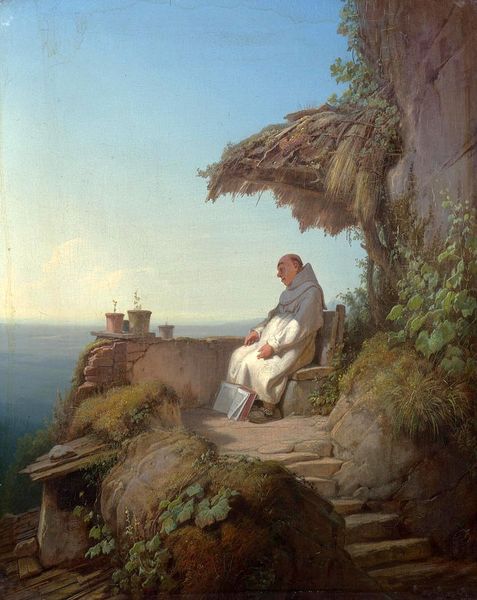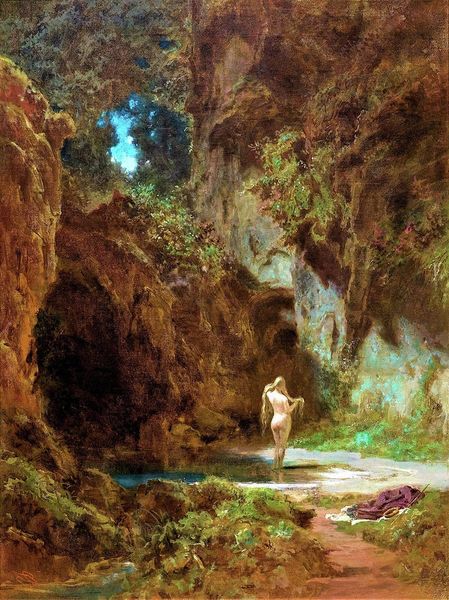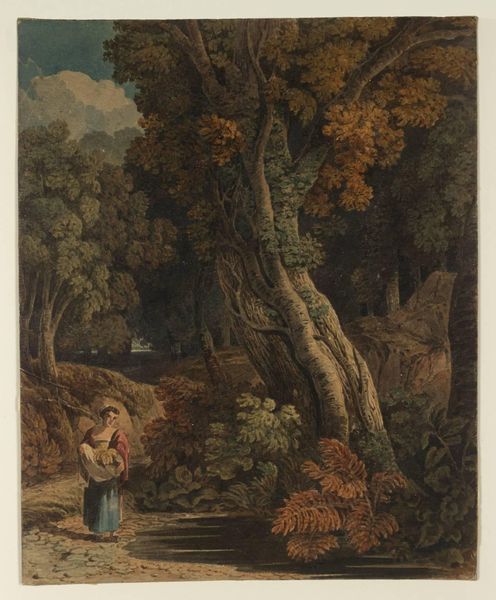
Copyright: Public Domain: Artvee
Carl Spitzweg painted 'Golden Evening' sometime in the mid-19th century, a period when the institutions of art were rapidly changing. His idyllic, detailed style captured the romantic spirit of the Biedermeier era in Germany and Austria. The painting depicts a monk in a secluded, overgrown garden. The choice of subject and setting invokes ideas of solitude, piety, and a connection to nature. However, the presence of wine bottles suggests a more relaxed, perhaps even subversive take on monastic life. The cultural context is crucial here. Spitzweg’s work emerged during a time of growing nationalism and a longing for simpler, more traditional ways of life. It's no coincidence that artists like Spitzweg would be so popular with a rising middle class. The self-possessed burghers in the audience for paintings like this were, after all, the ones profiting from the social changes that they ostensibly lamented. Delving into the historical archives, such as exhibition catalogs, letters, and period reviews, helps us understand the meaning this image held for its original audience.
Comments
No comments
Be the first to comment and join the conversation on the ultimate creative platform.
